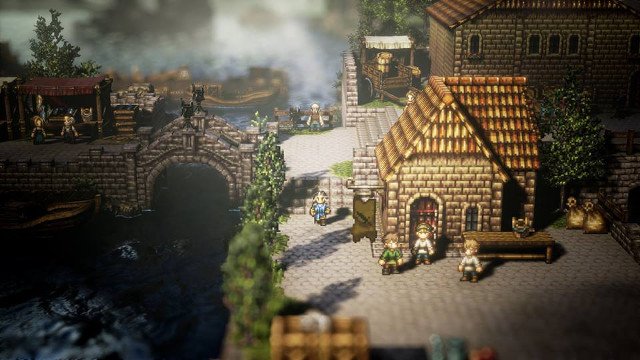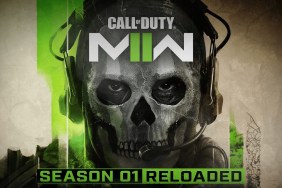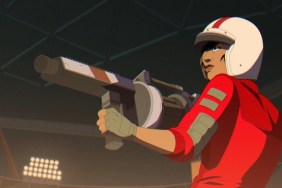Project Octopath Traveler is a very interesting Japanese role-playing game set to take players on a vast and multi-directional journey. That said, it’s been a bizarre and unwieldy name ever since it was first introduced in February 2017. It’s sort of on the nose that there are eight characters that inevitably walk down paths and travel, but this game deserves to be called something better. What, you might ask? Well, between multiple protagonists and unconventional RPG mechanics, it sure looks and acts like a SaGa game, a name still conveniently owned by Square Enix. Maybe it’s time for Square Enix to stop playing around and call Project Octopath the proper SaGa successor it appears to be.
A look at the recently released demo for Project Octopath shared a vibe that speaks volumes of nostalgia dating back to the first Romancing SaGa with bits and pieces from games after and up to SaGa Frontier 2. It doesn’t stop at multiple protagonists. The way characters interact, the stylish sprites in 3D planes, and the somewhat free-form story exploration all speak to a design that respects old-school SaGa, if not directly influenced by it.
Project Octopath Traveler: That SaGa special sauce
So what gives Project Octopath Traveler a distinct SaGa flavor and sets it apart from other Square Enix RPGs like Star Ocean or Secret of Mana? For that, let’s talk about what makes SaGa games themselves unique among the Square Enix library. The SaGa series started back in 1992 with the Final Fantasy Legend Game Boy games as they were known in America. Though given the “Final Fantasy” name for marketing purposes, these games introduced players to an open-ended system where they chose among a set of character styles to build their party into one tailored completely to their preference. This was a foundation that would carry on to almost all SaGa games.

Romancing SaGa was the start of a new chapter for the franchise in 1992 on the Super Famicom, setting the SaGa name in stone and marking a few distinct staples of the series. Though Final Fantasy Legend offered the option for players to choose their hero, Romancing SaGa greatly expanded the concept. Players don’t simply pick a blank hero in a static story. Each of the eight selectable characters have their own story starting point with character specific quests to make each journey unique based on who you picked. Moreover, Romancing SaGa introduced another core feature of the series in which players could explore the story in an open-ended format, going from scenario to scenario as they pleased and opening some opportunities only by going through certain events. You could even find the other main characters you didn’t select at the start hanging out in the world and recruit them to your character’s cause.
Also: Square Enix’s Hajime Tabata Would Turn Down Final Fantasy VII Remake
Though Romancing SaGa and its direct sequels solidified much of the SaGa formula, none of them were actually released outside of Japan besides a PlayStation 2 port of the original Romancing SaGa in 2005. Much of the world got their first taste of SaGa, and may very well recognize the franchise, from its first arrival worldwide on the PS1 in the form of SaGa Frontier in 1997. Much like previous SaGa games, SaGa Frontier introduced Western players to a multiple-protagonist theme alongside the ability to explore stories freely, pursue quests in order of personal preference, and recruit many of the main characters and side characters to your cause through exploration.
For its own part, SaGa Frontier used 2D pixelated sprites in lieu of the 3D craze in graphics that came with developing on the PS1 and Nintendo 64, but didn’t forgo them completely. Though much of SaGa Frontier took place in drawn backgrounds, combat placed your 2D characters in 3D arenas where they would lavishly perform stylish combat actions among the polygonal battlefields. This type of 2D/3D hybrid continued in other notable Square RPGs, notably SaGa Frontier 2 and Xenogears, before the full-on move to 3D models in games.
Project Octopath Traveler: A SaGa for the current generation
Fast forward to 2017. The SaGa series has been somewhat left by the wayside as Square Enix has focused on publishing and developing other bigger projects. The last new Western release in the SaGa franchise was Unlimited SaGa which was a huge departure in style from the games before it, praised in Japan, and panned elsewhere. The rest of the SaGa games to come since have either been card games, free-to-play online games, or released only in Japan. It’s pretty much been left to languish with very little real consideration these days.

Project Octopath Traveler comes at a time where most of the world outside of Japan haven’t seen or heard anything of the SaGa series in years. Yet, even the short taste given to us in the demo resonates with the SaGa style in so many ways. What begins as a simple selection among eight protagonists invites players into a nostalgic journey. Project Octopath Traveler and SaGa games aren’t especially unique for having players fight turn-based RPG battles with 2D characters on 3D planes, but it’s most certainly a part of the PS1 SaGa experience. Additionally, it’s not long before you finish a scenario with one character and are offered the chance to explore the world.
You travel into a nearby local town and can find another of the eight protagonists hanging around, prepared to take their own journey. You don’t have to invite them along into your party, but it’s an option. You can also continue elsewhere on your quest and not talk to them. That’s where the SaGa feels come in. It’s not just combat. It’s exploration. It’s choices in your Japanese role-playing game narrative that you can explore or go without. It’s freedom in opening opportunities or closing them off based on what you choose. That’s the feeling that makes it distinctly SaGa, even in just the demo that’s available to us right now.
Project Octopath Traveler most certainly has unique touches that set it apart in both combat and exploration. Then again, there’s no rule that says a spiritual sequel has to be the exact same as its predecessor. SaGa games themselves have been drastically different from era to era, but the core design choices unite them across generations. Project Octopath Traveler may not have started as a SaGa game, but when it comes out of the gate toting so many things that players worldwide loved about the SaGa games, from the developer and publisher that gave us the SaGa games no less, would it be so bad to consider a more lovable name than the working title “Project Octopath Traveler”?







